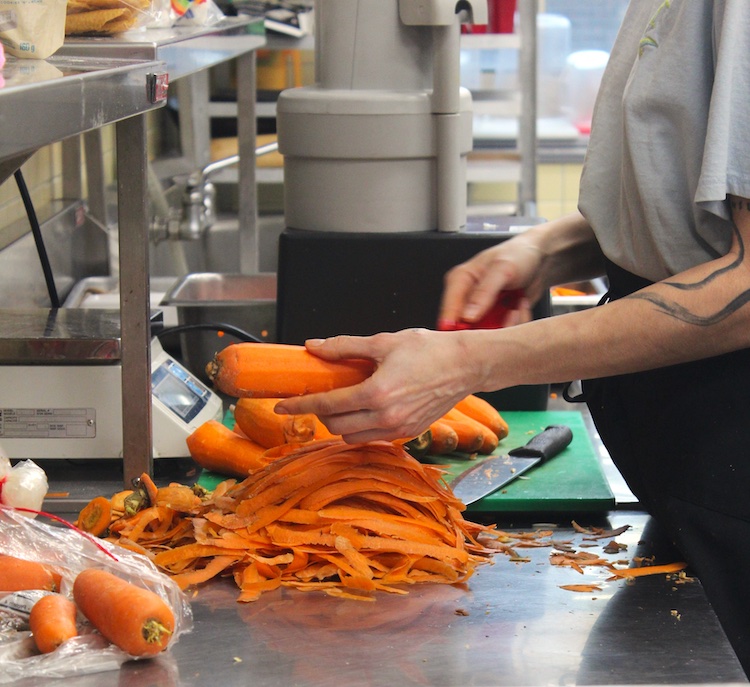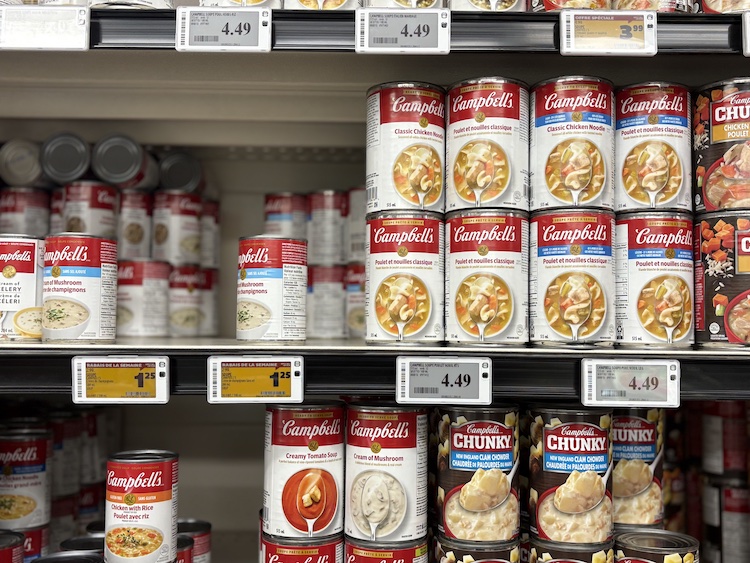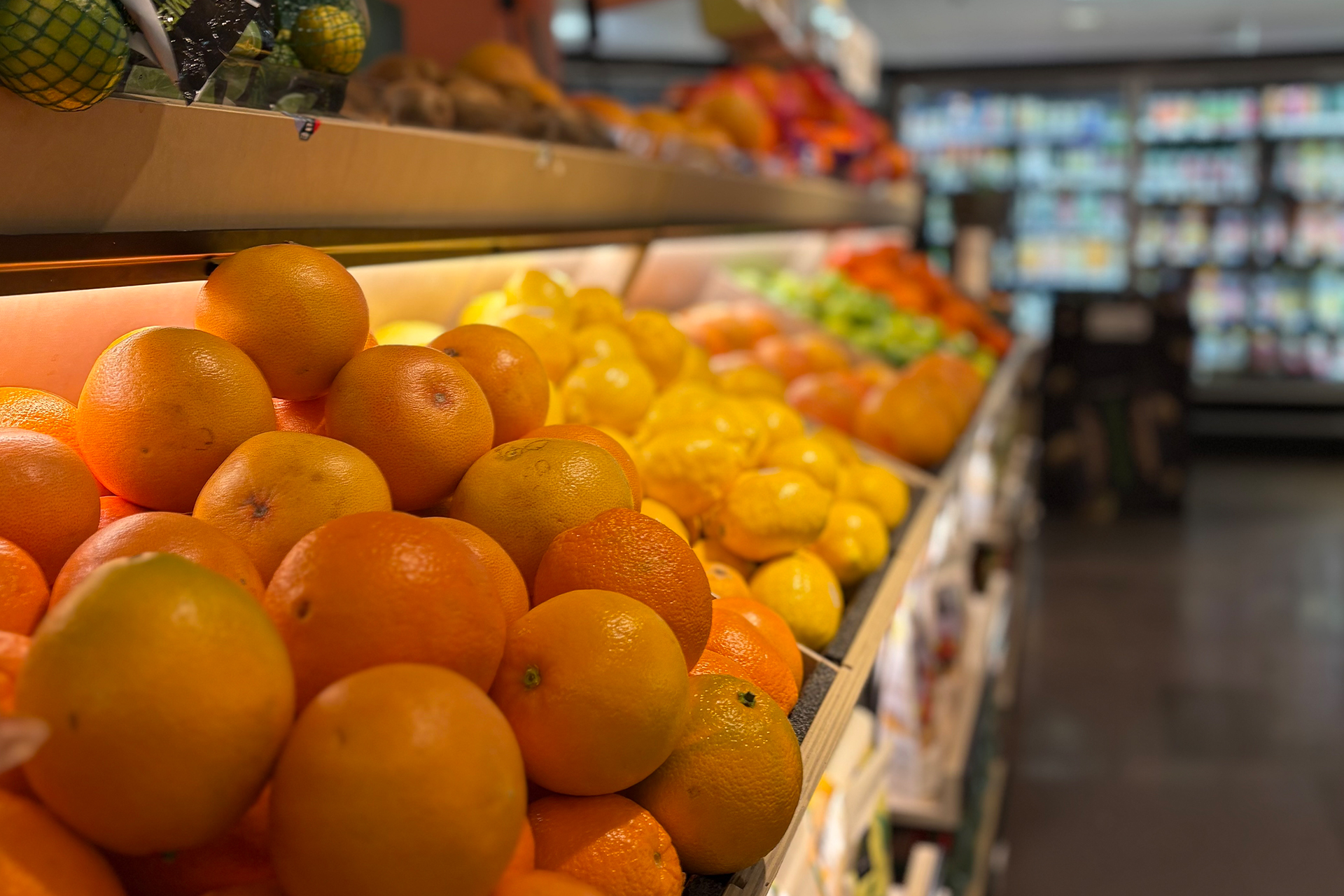BY Hannah Scott-Talib
After nearly a decade of working as Kitchen Director at La Cantine Chez Sylvie — a low-cost meal service in Montreal’s The Village — Eduardo Bustillos knows the ins and outs of how to operate the kitchen and keep things running smoothly.
But recently, he’s been faced with unprecedented challenges in the midst of record-breaking inflation and high cost of living.
“After COVID, a lot of other organizations started up,” says Bustillos, explaining that the increase in food initiatives across the city meant Moisson Montreal had more organizations to supply and began allotting them smaller donations as a result.
Prior to the pandemic, he says that Moisson Montreal provided a majority of La Cantine’s necessary ingredients, while La Cantine was responsible for covering a remaining 45 per cent of ingredients out of pocket or through exterior funding.
“Now, we’ve reached about 60 to 70 per cent [that we pay for],” states Bustillos. “The most efficient way to counter the cost would be to raise our own prices for those who come to eat here.”

A volunteer cook peels carrots in the kitchen of La Cantine Chez Sylvie, a low-cost meal service in Montreal’s The Village. Photo by Hannah Scott-Talib.
Operating out of the Comité social Centre-Sud — a centre that provides a variety of wellness resources to the Montreal community — La Cantine Chez Sylvie serves over a hundred customers a day for breakfast and lunch service, with meals ranging from just $2.50 to $5 in cost. The meal service is provided seven days a week.
La Cantine used to receive the main portion of its food donations from Moisson Montreal, the city’s largest supplier of food banks and food organizations across Montreal. Yet, following the start of the COVID-19 pandemic in 2020, Bustillos says that Moisson Montreal’s donations to La Cantine have only gone down, while La Cantine’s number of visitors continues to rise.
Whereas in previous years they maxed out at serving around 100 portions a day, in 2024 that number rose to as many as 170 portions served each day.

A chef at La Cantine Chez Sylvie seasons a tray of meat being prepared for lunch service. Photo by Hannah Scott-Talib.
Yet, La Cantine has maintained pre-inflation prices for their customers. According to Bustillos, the reason boils down to the organization’s values of providing for the community.
“The economic situation has gotten worse compared to before, prices are going up [everywhere],” he says. “But this is our compromise, to maintain the same prices as before.”
Maintaining these prices will only continue to be difficult for food organizations such as La Cantine Chez Sylvie, however.
According to the 2025 Canada Food Price Report, food inflation was expected to increase by 3 to 5 per cent.
One particular, very recent change has now caused this inflation to rise even more – U.S. President Donald Trump’s tariff measures on Canada. The measures enforce a 25 per cent additional tariff on imports from Canada, as well as a 10 per cent tariff on Canadian energy resources.

Following a brief decrease in late 2024, food inflation has spiked recently. Infographic by Hannah Scott-Talib.
“We were already expecting some [inflation]. But now we’re having this [trade war] on top,” says Adelphe Ekponon, associate professor in finance at the University of Ottawa. “This is adding to what was expected before.”
He adds that, recently, the country is seeing food inflation rise to around 5 to 6 per cent – even higher than anticipated.
“With the tariffs, it is estimated that for the rest of the year, we’re going to have one more per cent increase in inflation on average, and for food, it might be a little higher,” Ekponon says. “In Canada, we mostly import this food, so we are expecting to have a more than 1 per cent increase in food prices on average.”
Ekponon explains that there are a number of factors causing prices to rise. Firstly, exporting to the U.S. is going to be more costly, as more taxes will need to be paid. Then, there are factors such as energy and transportation that play a part in the grocery store prices.
“With these tariffs, we’re going to have to transport [non-durable goods] more, and so the prices of food and grocery are going to also be increased,” he says. “Some suppliers are going to be trying to find different venues to get their food in or out [of the country], because the other factor that is going to be driving prices is also the reversal we are applying to the U.S.”

Grocery store prices are being driven even higher due to recent U.S. tariff measures as well as Canada’s response to these measures. Photo by Hannah Scott-Talib.
With such factors driving food inflation to an extreme high, it is perhaps no wonder that places like La Cantine Chez Sylvie are simultaneously struggling to find funding and donations amidst an increase in customers.
Montreal food bank Adrianna Espace Collectif is experiencing similar problems.
The food bank is open from 1 p.m. to 3 p.m. every Tuesday, where volunteers give out individual and family-sized free food boxes to visitors.
“We serve all kinds of people: People who are new immigrants, as well as people who are on welfare, as well as workers, so we have a range of people that we serve in-person,” says Dave Massé, a volunteer at Adrianna Espace Collectif.
Massé worries the federal government could cut funding to food banks.
“[Foodbanks] are a need, and especially with food inflation, people are relying a lot on them,” says Massé. “The government support should remain as-is at least for now, especially with Trump and everything happening [in the US]”
Another problem Massé explains is that some of the city’s food initiatives have now ended up in competition with each other due to low supply. Particularly, he says that certain “low-cost grocery initiatives” opening up across the city recently might be receiving more and fresher produce from suppliers than traditional food banks.
“The food that we’re getting, the quality is diminishing,” Massé says.

La Cantine Chez Sylvie operates out of the Comité social Centre-Sud in Montreal’s The Village. Photo by Hannah Scott-Talib.
Over at La Cantine, Bustillos says that the reason for this could be that these low-cost grocery places — which often operate using a “pay-what-you-can” model — are seen as preferable to larger suppliers such as Moisson Montreal.
Even still, Massé expresses that it is ultimately nice to see low-cost grocery initiatives opening up across the city, as another way for low-income residents to combat food insecurity.
“It’s kind of sad for us because in some ways, we’re losing out on donations that we would normally get,” he says. “But we no longer get these donations because of the low-cost groceries that are opening.”
According to Massé, the importance of food banks extends past the food donations as well, as many of Adrianna Espace Collectif’s users are looking to make their lives better in some way or another by attending the food bank.
“A lot of people who are here are people who have struggled with something in their lives – a drug related problem, being without a shelter, things like that,” he says. “Even myself, I’ve struggled with certain aspects in my life. Knowing that you’ve been in other people’s shoes as well, either on welfare or [in regards to] people who struggle with these kinds of issues, it’s kind of nice, you know?”
Watch: How Montreal-based free meal initiative NDG Food Not Bombs combines food with politics. Video by Hannah Scott-Talib.
The social aspect is a sentiment that resonates with those at La Cantine Chez Sylvie as well.
“Yes we are a food establishment, but we’re also a place where people can come and socialize, break their isolation,” explains Marie-Josée Lebel, another director at the Comité social Centre-Sud. “This is something a lot of people talk about here – how they don’t want to cook for themselves at home, so it’s nice to come and eat with others.”




